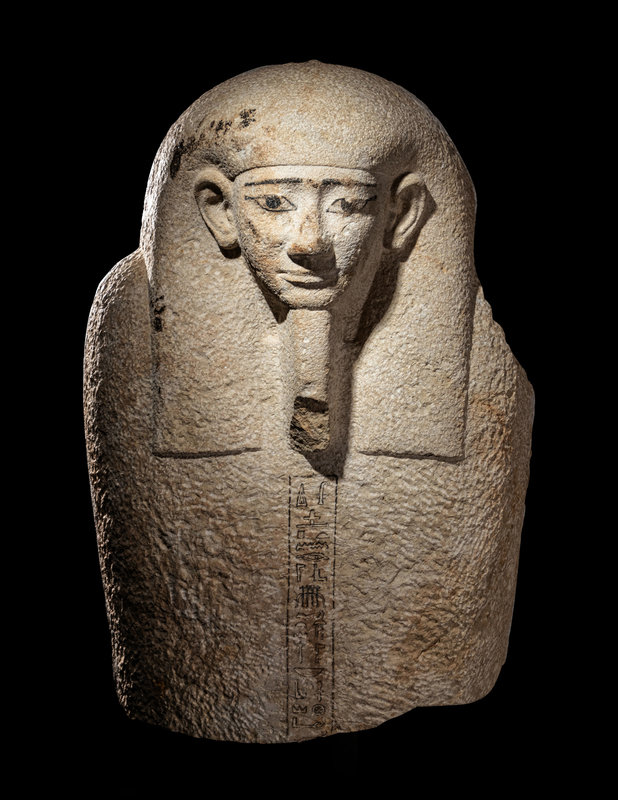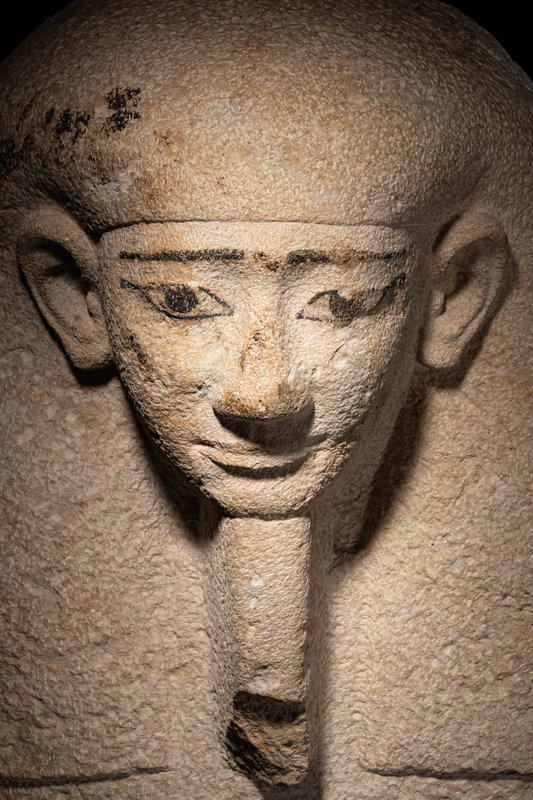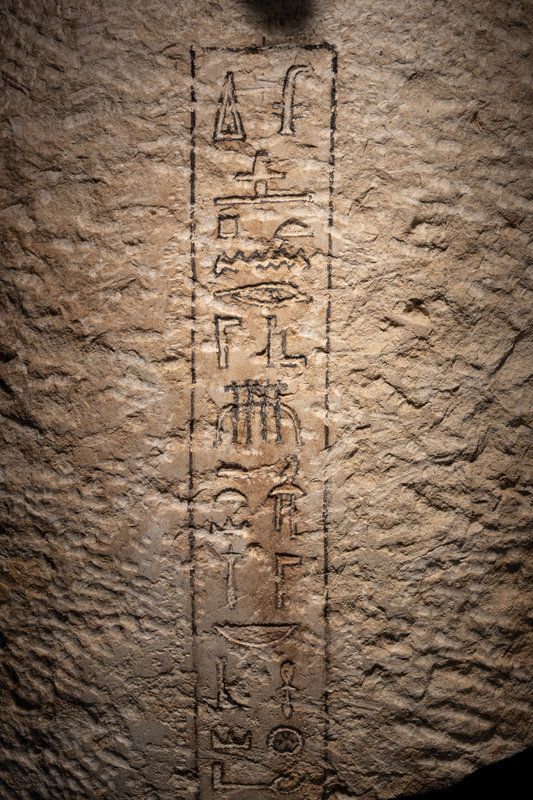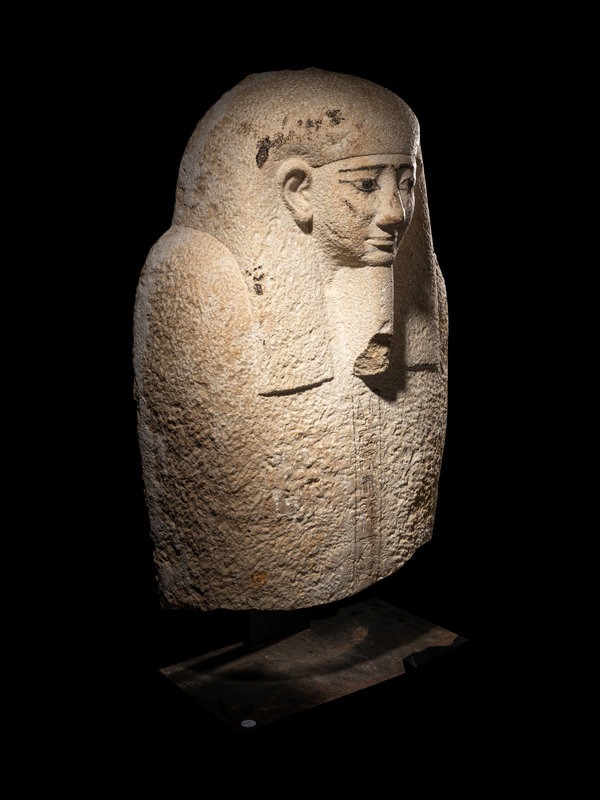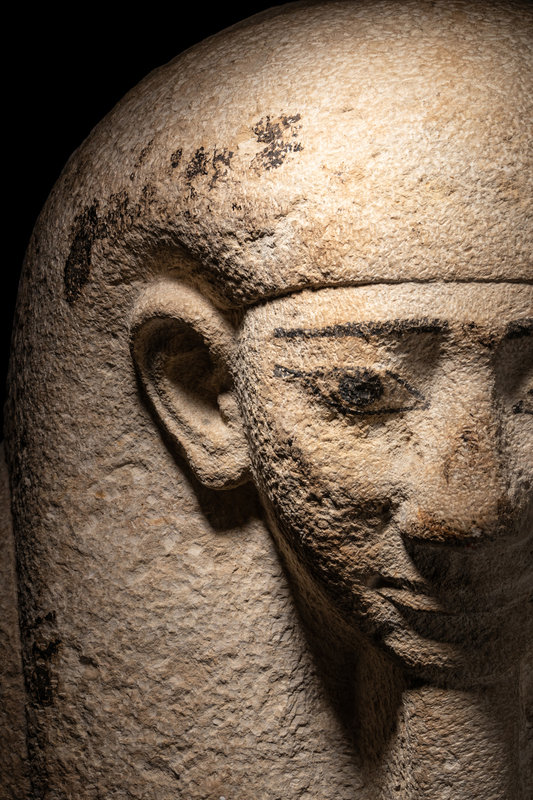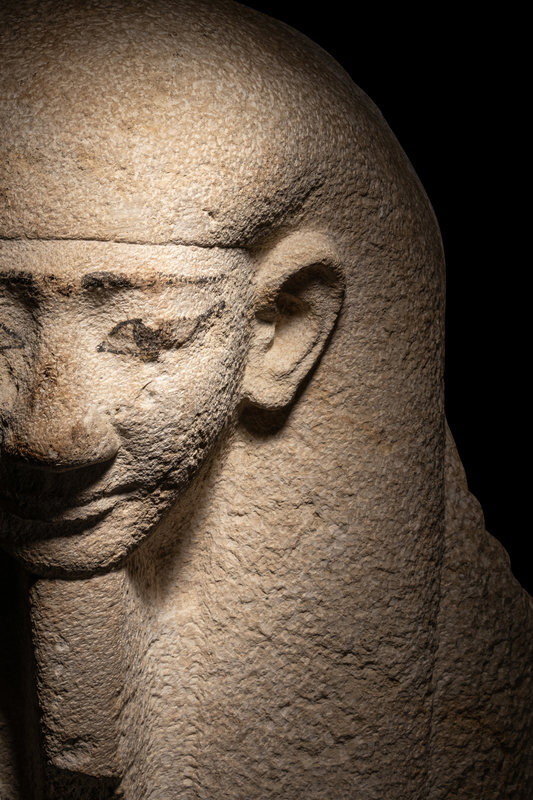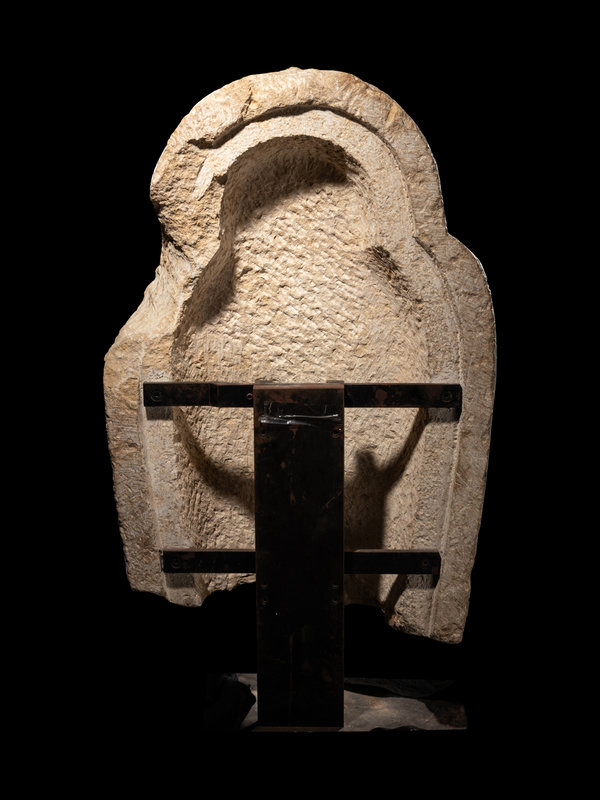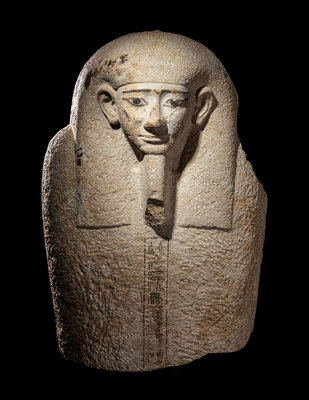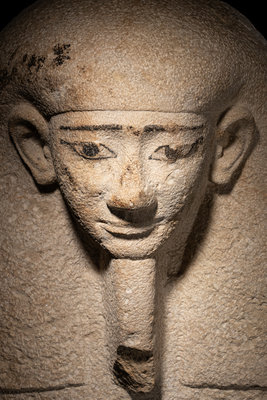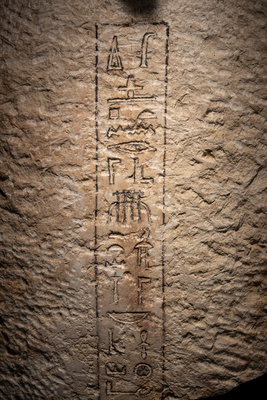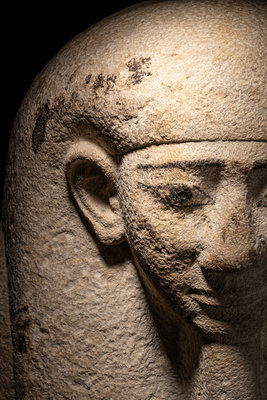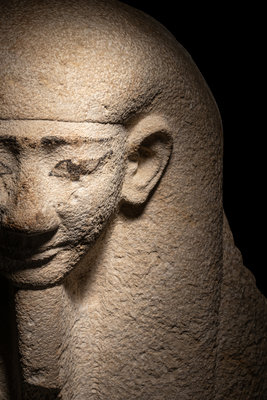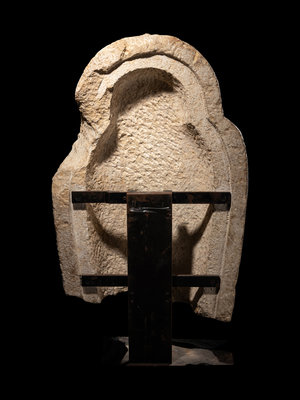Lot 73
An Egyptian Limestone Sarcophagus Lid
Sale 910 - Antiquities & Ethnographic Art
Nov 18, 2021
10:00AM CT
Live / Chicago
Own a similar item?
Estimate
$40,000 -
60,000
Price Realized
$68,750
Sold prices are inclusive of Buyer’s Premium
Lot Description
An Egyptian Limestone Sarcophagus Lid
Late Period, 26th-30th Dynasty, 664-343 B.C.
Height 37 inches (94 cm).
Provenance:
Private Collection, United States, prior to 1980.
Christie's, New York, Antiquities, 5 June 1998, Lot 62.
(with invoice copy)
Collection of Alan Dershowitz and Carolyn Cohen, Cambridge, Massachusetts.
Royal Athena Galleries, New York, 2013 (Art of the Ancient World, vol. XXIV, no. 181).
(with invoice copy)
Published:
The New Country Chic, Architectural Digest, June 2013 [advertisement].
Note:
Limestone anthropoid coffins emerged in the Middle Kingdom but did not become conventional until the Late Period. Sarcophagus lids were ornately carved with the face and wig of the deceased to resemble the individual as they were while living. The stone sarcophagi contained the mummy, covered by body-cases of cartonnage or resting in an inner wooden anthropoid coffin.
Published:
The New Country Chic, Architectural Digest, June 2013 [advertisement].
Note:
Limestone anthropoid coffins emerged in the Middle Kingdom but did not become conventional until the Late Period. Sarcophagus lids were ornately carved with the face and wig of the deceased to resemble the individual as they were while living. The stone sarcophagi contained the mummy, covered by body-cases of cartonnage or resting in an inner wooden anthropoid coffin.
In ancient Egyptian, the word for sarcophagus is “neb ankh,” meaning possessor of life. The sarcophagus was an integral part of the elaborate burial process. The Egyptians fiercely believed in an afterlife and for a successful passage to the realm of the dead (Duat), the body needed to be preserved here on Earth. The sarcophagus served as the substitute body in case the mummy was destroyed.
Sarcophagi were often inscribed with spells from the Book of the Dead. The inscription on this sarcophagus reads: “A gift which the king gives to Osiris, the foremost of the Westerners, the great god, lord of Abydos, in order that he may give […]” Presumably the missing text would include offerings that the deceased could present to deities in the afterlife.
Condition Report
Contact Information
Auction Specialist
